Dowe on Le Mans 1990...
How TWR’s UK v US rivalry and some canny decision-making outfoxed the 962s
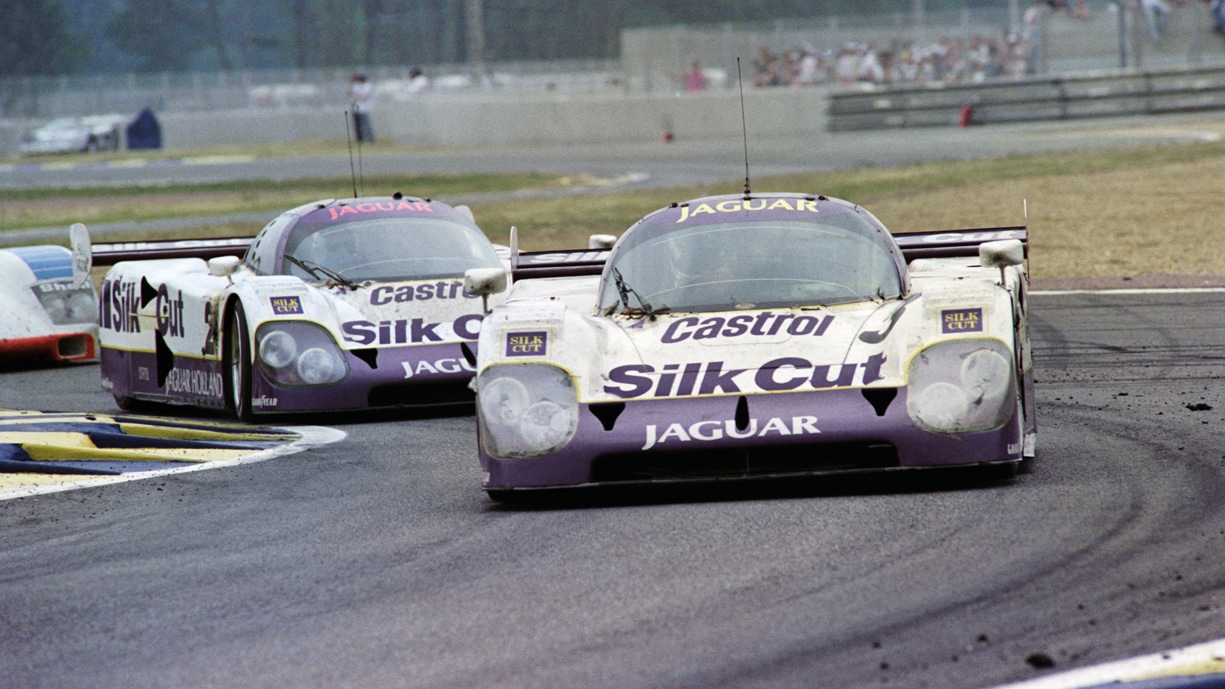
Brits vs Americans within the Tom Walkinshaw team at Le Mans 1990
Getty Images
At TWR USA, we were very sharp by 1990. We had finished first and second at the Daytona 24 Hours that year, thanks to some excellent engineers. In fact we had been able to let each car race the other the whole 24 hours. For Le Mans we had built a new chassis, to Tony Southgate’s original design, and it was sent to TWR at Kidlington to be checked for compliance and to be liveried.
We then set about putting together a ‘care package’ of our IMSA ‘goodies’ for fitting when we got to Le Mans. We had different rollbars and shock absorbers front and rear. But the biggest items were some very special one-piece brake calipers that had been designed and built in the US. Now we could go further than the UK cousins without a pad change. Also unbeknown to the guys in England was that we had some super-strong F1-type driveshafts.
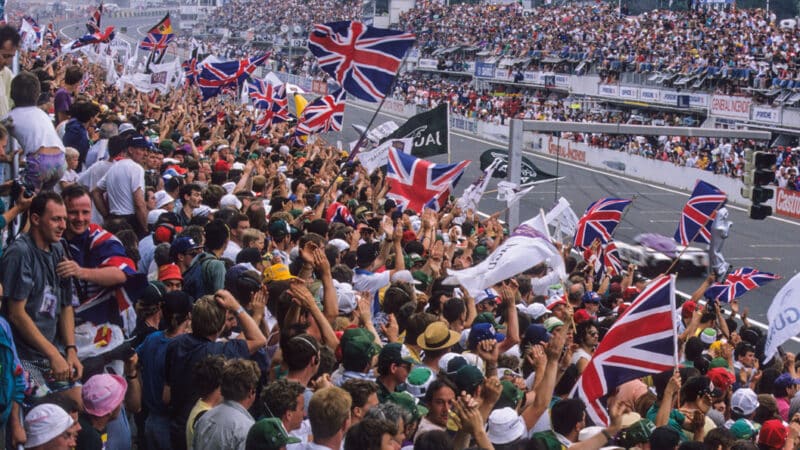
the scream of Jaguar 7-litre V12s is appreciated by the travelling support
Then there were our superior radios. Previously at Le Mans we’d had to use European equipment which usually gave up when the cars left the pits. Finally, we had our own design of rear wing, which with the new-for-1990 chicanes along the Mulsanne Straight required an aero level that was virtually identical to Daytona. Things were just going our way.
When practice started, there was not much interest in what we were doing from the ‘English’ side. Barely any notice was taken of what we were doing, not even when they saw our clever brakes. The reaction was along the lines of, ‘What silly things have you Americans changed now?’ Although Major Tom was aware of our development items, he never said anything to me about what we were doing.
Our driver line-up was pretty good: ‘Big John’ Nielsen, Price Cobb and Eliseo Salazar. However, Friday’s pre-race preparation brought to light that the gearbox dog rings were being used way too heavily by one of the drivers. And it was obvious that Eliseo was the problem. I had this confirmed by the manager of another team in the paddock who had previously employed him.
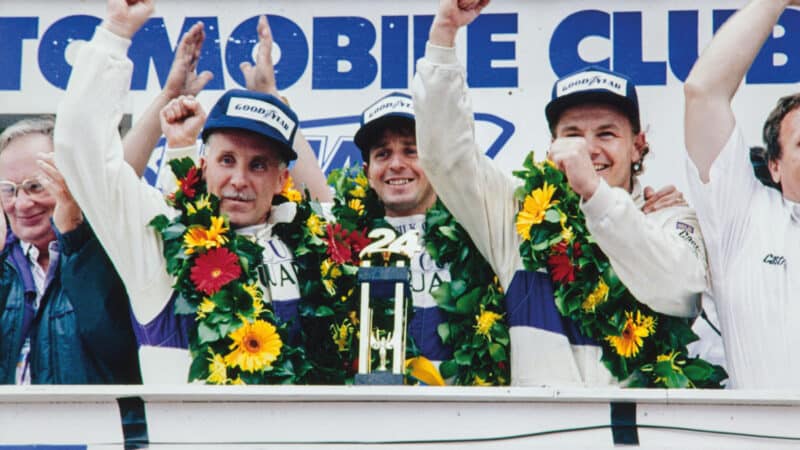
from left: Price Cobb, Martin Brundle and John Nielsen
Getty Images
I put it to Tom that a good strategy might be to avoid using Eliseo for as long as possible in order to keep a seat free should one of the other ‘favourite’ drivers have a problem. Tom agreed. Next morning, no sooner had the plan been revealed to the drivers that Big John and Price would run through the evening and night until Sunday morning than I had Salazar in tears, begging me to keep him in our car. I had to tell him that it was what Tom had decided, which was of course true.
One of the big advantages we had was that having run at Daytona we knew that the ‘standard’ 480 compound rear Goodyear tyres would not double stint on the Jaguars at Le Mans. Instead, we had run a much harder 600 compound tyre during the heat of the day. When we arrived at Le Mans I had to call back to Akron for 10 sets of 600 compound tyres shipped in without anyone knowing. Our US tyre man Kenny Szymanski did his bit by buffing off the markings and hiding our secret treasure inside the old pit tunnels.
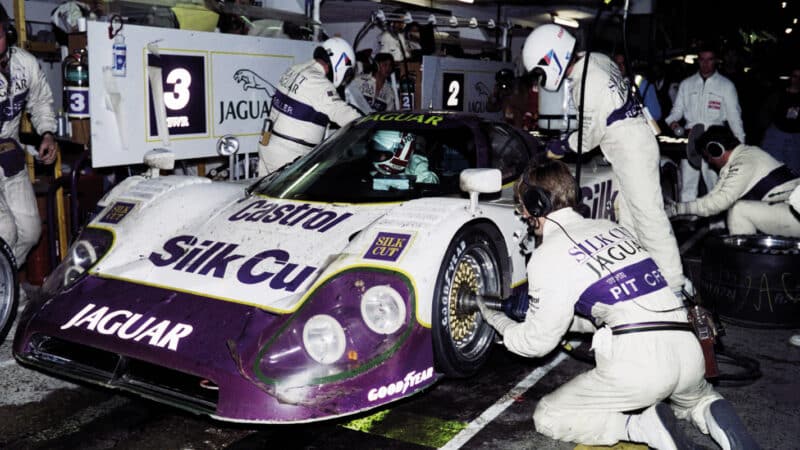
Jaguar XJR-12 No3 went all the way
When we started double-stinting the tyres and beating the UK team hands-down in the pits, I had a very uptight meeting with Tom. I had to come clean as to what was going on and we were forced into giving some of our harder-wearing rear tyres to Martin Brundle’s car.
One of the other fun bits happened around 10pm. A car had caught fire at the Porsche Curves and the ACO had put out a safety car. John Nielsen had just been in for fuel a couple of laps earlier and he called in and told me the mess would take a bit of time to clean up.
Now our good US radios had paid off. I called Nielsen straight into the pits to top off the fuel. Boy, did that move unleash a load of trouble. I had Tom himself right in my face about giving up track position. The UK team cars had continued running around under a caution flag, but they then had to pit under a green when we went back to racing. About an hour later we went into the lead after everyone else was refuelling. This gave us a lead that we never gave up.
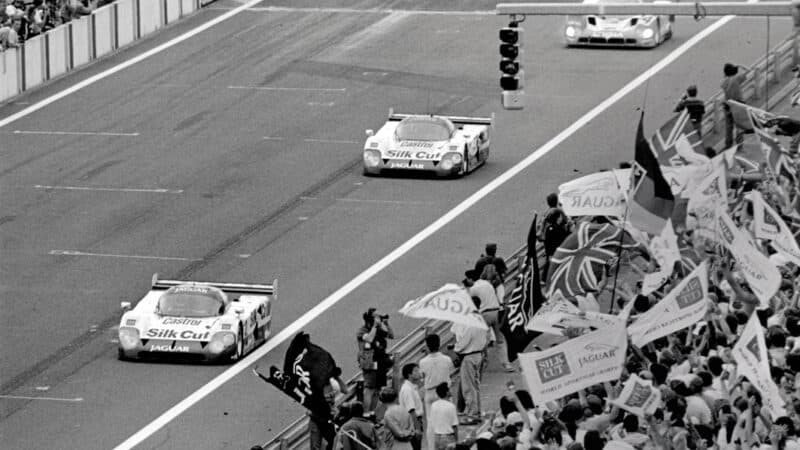
A famous 1-2 for Jaguar – but a tough decision had to be made over driver choice
“Cobb, who had been unwell, was slowly dehydrating“
The next bit of drama was that Cobb, who had recently been quite unwell, was slowly dehydrating. Remember, these cars had no power steering, little ventilation and no drinks bottles, and over 5000lb of downforce. So during the middle of the night we had to ask Big John to triple-stint while Cobb recovered. Then the Brundle car, which had been fighting a slow water leak, finally called it a day.
Tom came and asked if our car would be able to last until the finish. You can imagine my reply. He endorsed my view on driver choice and at 8am Brundle got in the car. Of all the drivers I have worked with, he was the most impressive, a full-on contributor with the gift of being able to move forward any team with which he worked. He didn’t let us down.
We duly forged on to win, despite the car having lost a gear. In the last 15 minutes, the fastest Porsche in the race blew its engine when it was holding second place. This elevated the remaining Kidlington entry to second, four laps behind us. It was the second Le Mans win in three years for TWR.
